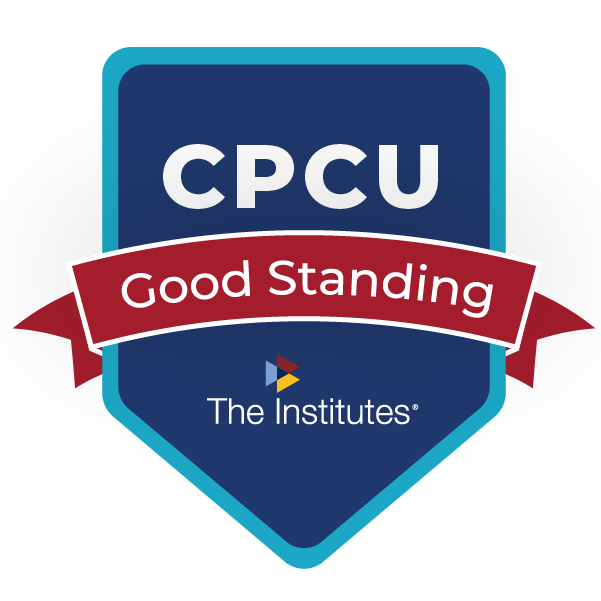June is National Annuity Awareness Month
June 8, 2022 – Lost amid all the National “Fill in the Blank” Month celebrations recognized in June (my personal favorite just might be National Accordion Awareness Month), perhaps none hits closer to the pocketbook than the one created by the National Association for Fixed Annuities (NAFA): National Annuity Awareness Month.
While all the stock market indexes continue their roller coaster ride taking your money and peace of mind along with it, you might use this month to reassess your future income plans. Annuity rates are very attractive these days.
As interest rates increase, so does the return on your money when you exchange a lump sum for a promise to receive guaranteed future income from a life insurance company.
According to one recent article, “the average payouts from an immediate annuity increased by more than 11% for men and 13% for women since the beginning of 2022.”
This is excellent news for anyone settling a personal injury claim who has the options to structure their settlement. Structured settlements provide guaranteed tax-free (physical injury) or tax-deferred (n0nphysical injury) when elected as part of a negotiated settlement for damage claims.
As people near retirement, their risk profile generally shifts to more conservative options. The well-established security annuities offer is something that should be considered at this crucial juncture.
Posted: June 8, 2022 | Category: Blog, Retirement, Structured Settlements | Comments Off on June is National Annuity Awareness Month
“Annuities Are Hot”
June 3, 2022 – That’s the word on the street according to the author of “Rising Interest Rates Means Annuities Are Hot.”
The article goes on to promote the current environment as an excellent time to consider dedicating a portion of one’s retirement portfolio toward annuities, especially if near retirement.
Not discussed in the article but still relevant is the fact that structured settlement rates have similarly risen making them an excellent choice for those involved in settling a personal injury lawsuit.
Structured settlement premium is up 20% in 2022Q1 versus 20221Q1.
One notable statistic supports the article’s contention that annuities have increased in popularity:
- Fixed annuity sales are up 14% in 2022Q1 ($35.2 million) over the same period a year earlier (which was higher than the year before).
Although unstated, it’s probably not a coincidence that the increase in annuity interest coincides with the recent stock market challenges. When the riskiness of investing in the market becomes more pronounced, people tend to gravitate toward safer options with guaranteed features like fixed annuities.
While the article is very upbeat and encouraging about annuities, if I were to level one criticism of the article it would be that they suggest considering working with a financial advisor for guidance in this area.
The reason this suggestion may be worth reconsidering is because so many traditional financial advisors are notoriously negative when it comes to considering annuities. Even though economists and academics who study both traditional investing and annuities overwhelmingly favor annuities as the most efficient way to achieve income for life, many financial advisors frown on them.
Financial advisors, unless they specialize in income distribution, are more likely going to want to keep your money invested. (NOTE: Typical fee-only financial advisors charge ongoing fees for their service, whereas most annuity advisors receive a one-time commission usually equivalent to what the financial advisor would earn over a two-to-six-year period.)
One we do agree with. This IS an excellent time to consider annuities. Whether a structured settlement or a re-balancing of retirement funds, the climate for annuities hasn’t been this attractive for years.
Posted: June 3, 2022 | Category: Blog, Retirement, Structured Settlements | Comments Off on “Annuities Are Hot”
Car Accident Statistics
March 15, 2021 – Structured settlements and automobile accidents are inextricably linked. The vast majority of structured settlements we place each year stem from motor vehicle accidents.
If you are unfortunate enough to be one of the six million people in the United States involved in an automobile accident each year, there is a less than 1% chance your injuries will be fatal.
This is one of the many conclusions gleaned from “Car Accident Statistics You Need to Know in 2021,” a consolidated deep dive of resource material assembled on the topic courtesy of Darrigo & Diaz Personal Injury Law Form.
But just in case, want to tip the odds in your favor of NOT dying in a car wreck? Here are some tips.
Don’t speed.
Wear your seat belt.
Don’t drive between 4:00 pm and 8:00 pm on Saturdays.
Don’t be a teenager.
Don’t be male.
Of course, fatalities represent only one adverse outcome stemming from automobile accidents.
Non-Fatal Accidents
 For the lucky ones who survive, injuries will be mild and temporary.
For the lucky ones who survive, injuries will be mild and temporary.
Some, though, will sustain catastrophic injuries leaving them with medical problems that require ongoing and extensive future care.
Regardless of the cause and severity of the accident, it’s not unusual for the injured parties to file claims or lawsuits against the at-fault party to ensure the financial impact of an accident.
Structured Settlements
When resolving claims and lawsuits, clients often choose structured settlements as an effective method of ensuring funds for their future care will be there when needed.
Also, structured settlements can provide guaranteed future income when someone is unable to return to their pre-accident employment.
For the family of someone killed in an automobile accident, structured settlements help ease financial strain. Carrying on with life after losing a loved one is challenging enough without the added burden of financial difficulties.
I hope you enjoy the link to the accident statistics. Because knowledge is power, a few minutes spent perusing these attachments will increase awareness helping increase your chances of avoiding an auto accident.
Photo by Harlie Raethel on Unsplash
Posted: March 15, 2021 | Category: Blog, Structured Settlements | Comments Off on Car Accident Statistics
Social Inflation and Its Impact on BI Settlements
January 27, 2021 – What is social inflation? If you’re a stat junkie who happens to work in or around the personal injury litigation arena, have I got a white paper for you!
Last June, the Insurance Research Council published Social Inflation: Evidence and Impact on Property-Casualty Insurance. This fascinating 18-pager is very readable. Further, it lays bare the impact evolving societal trends have on the rising cost of settlement and verdict values. By extension, social inflation impacts insurance industry profitability.
Every policyholder, claims handler, actuary, lawyer, and citizen who reads this paper will get a helpful glimpse of the future.
Anger Driving Claims Costs?
Personal injury lawsuit filings seem to correlate directly to societal anger.
One of the more interesting tidbits is the observed link between Americans’ general anger and their tendency to file personal injury lawsuits.
Recent Gallop polling suggests nearly one in four people are angry on any given day – the highest level in more than a decade.
No analysis was performed indicating the source of individuals’ anger.
A Role for Structured Settlements
Because of their unique ability to match future dollars with future needs, structured settlements can be especially helpful in addressing another social inflation trend. The so-called “nuclear” verdicts, or those exceeding $10 million, have emerged as a major threat to long-term insurance company viability.
With personal injury filings expected to continue increasing and nuclear verdicts a statistical reality, structured settlement usage is expected to continue serving a vital role in dispute resolution.
Perhaps the biggest stunner of the paper is this statistic: Average jury verdicts against trucking firms have increased a whopping 654% since 2012 and now top $17 million!
With actuarial-adjusted pricing available for those with severe injuries, structured settlements permit the negotiating parties to resolve their claims more cost-effectively before trial.
Somber Final Thought
It’s worth mentioning all the data collected for this paper predated the emergence of COVID-19. It will be interesting to see the pandemic’s impact on social inflation going forward.
Photo by Icons8 Team on Unsplash
Posted: January 27, 2021 | Category: Blog, Structured Settlements | Tags: litigation, structured settlements | Comments Off on Social Inflation and Its Impact on BI Settlements
Who’s Ready for 2021?
December 30, 2020 – As we wind down the year that couldn’t have been crazier, today we focus on everything positive and reach out to express our heartfelt thanks to all who helped contribute to our success.
This past year, we helped secure the futures of 85 individuals facing assorted financial challenges in 2020. They valued our expertise sufficiently to have entrusted us to help them make decisions involving nearly $24 million.
We are honored and humbled by the ongoing vote of confidence our clients have placed in us and wanted to send out a big CDC-compliant:

So just who did we help this past year?
Most of our clients were folks receiving settlement proceeds from a personal injury claim or lawsuit. We helped them choose risk-appropriate structured settlement or trust options with an emphasis on safety and tax efficiency.
We aided claims professionals, businesses, government entities and hospitals who require professional expertise in helping evaluate litigation exposure and negotiate effective claim settlements.
We added to our ever-expanding list of satisfied plaintiff attorneys who secure their own futures by deferring their contingency fees into fixed income annuities and managed equity accounts.
We helped a few people defer, reduce, or eliminate capital gains taxes by facilitating a structured installment sale when they were selling property.
We Zoomed into your homes and socially distanced offices to help provide specialized training on a variety of topics. We presented helpful information to claims offices, realtor groups and industry professionals on structured settlements, structured installment sales and other areas of interest.
THANK YOU for allowing us the privilege of serving you!
What’s Next?
Our pledge to you going forward is to keep doing more of the same AND MORE in 2021 and beyond! Whatever your financial future needs, if we can’t help you, we’ll find someone who can.
So, as we say goodbye to this historic (for all the wrong reasons) moment in time, we send you our most sincere wishes for a very safe and Happy New Year.
We understand your lives are different and some of you have suffered more personal losses than the rest of us. We send our most positive thoughts to you with high hopes the year ahead will bring peace and a return to some semblance of normalcy.
Posted: December 30, 2020 | Category: Blog, Structured Settlements | Comments Off on Who’s Ready for 2021?
IRS: Tax Implications of Settlements and Judgments
December 18, 2020 – Special thanks to the National Structured Settlements Trade Association (NSSTA) for calling our attention to a recent brief from the IRS which addresses important distinctions in the tax treatment of various personal injury damages.
[Click HERE] to read the brief.
Today, we share this summary with our clients who require guidance on matters involving taxation when receiving injury damages.
 Despite plenty of clarity on the topic, there remains sufficient misunderstanding regarding certain recoveries. How to differentiate between a physical (tax-free) injury and a non-physical (taxable) one, for instance.
Despite plenty of clarity on the topic, there remains sufficient misunderstanding regarding certain recoveries. How to differentiate between a physical (tax-free) injury and a non-physical (taxable) one, for instance.
Claims involving emotion distress are especially vexing to some.
This update helps address the key question every stakeholder needs to ask prior to finalizing any personal injury settlement:
“What was the settlement (and its corresponding payments) intended to replace?”
This four-page memo doesn’t specifically address the topic of structured settlements. We remind our clients, however, that proper income planning is crucial to maximizing indemnification.
Especially when receiving taxable damages, a structured settlement can enhance the overall value of one’s settlement significantly by increasing the after-tax recovery.
Whereas all damages (except punitive damages) paid on account of personal, physical injuries are tax-free under 26 U.S.C. § 104(a)(2) whether as a lump sum “or as periodic payments,” all other damages are considered taxable.
Taxable damages, on the other hand, are taxed as income is received. When settling for a single lump sum, all taxes will be due in the year the settlement is finalized. On larger settlements, this can have a severe negative impact on a client’s net recovery.
By structuring taxable recoveries, most people can mitigate their tax burden by spreading out their recovery over several years. The net effect of this strategy is a more tax efficient settlement.
Please don’t hesitate to contact us BEFORE your case settles to ensure you preserve all your post-settlement options. Meanwhile, I hope you find this resource helpful. Let us know if you have any questions.
Posted: December 18, 2020 | Category: Blog, Structured Settlements | Comments Off on IRS: Tax Implications of Settlements and Judgments
The Buffett Indicator
November 10, 2020 – Please, please, please, PLEASE understand the stock market is not without risk.
The stock market has had a phenomenal run over the course of the past decade. Fortunes have been made, lost for a bit, then made again.
If you’re among those who have benefited from this prolonged bull run, CONGRATULATIONS! You beat the house in Vegas.
Alas, human nature is such that prolonged stock market success often lulls investors into a false sense of security. They remain solidly invested even when certain indicators suggest it may be wise to pull back.
And just like the gambler who can’t walk away from the table when they’re ahead, bad times may lie ahead.
Now is one of those times. It’s actually been here for the better part of a year.
The Buffett Indicator
Warren Buffett has few peers when it comes to investing success. Using a combination of skill, common sense, patience, and a shrewdness which belies his folksy nature, Buffett has amassed a personal fortune and personifies wealth building acumen.
Because his words carry so much weight, the Buffett Indicator, which has historically pinpointed when stocks may be overvalued and could come crashing down, is something everyone with market exposure should pay close attention to and can be simplified as follows:
Market Capitalization/Quarterly GDP
The higher the Buffett Indicator number, the greater the risk.
Comparing Historical Buffett Indicators
According to this graph from DQYDJ.com, the Buffett Indicator hit 2.227 during Q2 2020. That’s really high! Throw in a global pandemic and stimulus spending over the past ten months and the market would seem even more precarious.
For the same reason athletic teams review film of games already played, sometimes backward glances can help shed light on how to prepare for the future. For perspective and to see what may lie ahead, let’s pick a few select periods starting when the nonagenarian Buffett was a spry 30-something year old investor:
Quarter Year – Buffett Indicator – DJIA – Years until DJIA returned
Q4 1968 – 1.022 – 6,529 – 25 years
Q1 2000 – 1.886 – 15,526 – 6.9 years
Q2 2007 – 1.524 – 16,747 – 6 years
Q1 2020 – 2.160 – 29,276 – ???
 IF the market does tank, are you comfortable waiting six, seven, or even twenty-five years until the markets return to their pre-crash levels? That’s a lot of cash you’ll be burning.
IF the market does tank, are you comfortable waiting six, seven, or even twenty-five years until the markets return to their pre-crash levels? That’s a lot of cash you’ll be burning.
Remember the Roaring Twenties? Of course, you don’t. Unless you’re 105 or older! That decade was one of exponential economic growth and widespread prosperity. It was an amazing time for many. Until it wasn’t. Once the bubble popped, the Great Depression arrived sending stock values plummeting along with the economy which took more than twenty-five years to recover from!
Your Safest Bet
So, if you are in or near retirement and are still fully invested in the market, do yourself a huge favor and GET OUT NOW! At least partially. You don’t need to completely eliminate your market exposure, but converting some of your portfolio into a stream of safe, secure, tax-advantaged cash flows will go a long way toward preserving what you’ve earned and protecting yourself from potentially catastrophic loss.
If you are about to receive money from a personal injury settlement, here’s another little bit of Warren Buffett wisdom worth sharing. Structured settlements remain the safest, surest choice for anyone ready to settle their insurance claim. Some options even include stock market-driven upside potential without the downside risk.
Posted: November 10, 2020 | Category: Blog, Retirement, Structured Settlements | Tags: retirement income, structured settlements | Comments Off on The Buffett Indicator
Coronavirus Auto Injury Data
May 8, 2020 – Remember that credit you received on your auto insurance bill last month due to the anticipated lower claims costs since fewer people would be on the road during the coronavirus pandemic shelter-in-place orders?
Don’t be surprised if that ends rather quickly.
According to a recent article in Digital Insurance, a periodical aimed at senior insurance executives, those assumptions may have been faulty. (“Data may imply coronavirus auto-premium reductions were premature.”)

While there are certainly fewer vehicles on the road, it turns out many are traveling faster and perhaps feeling overly secure and paying less attention because of the low traffic, leading to more speeding tickets being issued and a higher fatality rate when crashes occur.
This can be especially problematic where 18-wheelers are involved. Speed + Mass + Collision usually = Very Bad Outcome.
This tracks with some of the conversations I’ve had recently with claims personnel and plaintiff attorneys. Overall, it’s too soon to know how all this will play out but all signs point toward the possibility of lower claims counts with higher severity until traffic patterns return to normal.
Until then, a timely reminder to be extra vigilant when driving during this pandemic.
Photo by Michael Jin on Unsplash
Posted: May 8, 2020 | Category: Articles, Blog, Structured Settlements | Comments Off on Coronavirus Auto Injury Data
Structured Settlements: Structured Installment Sales
Eleventh in a series of blog posts dedicated to helping clients decide when a structured settlement should be considered.

Today’s Installment (npi): Structured Installment Sales
February 5, 2020 – For this segment in our series of educational offerings, we’re going off-topic slightly because we wish to present a structured settlement offshoot product designed to help clients defer and sometimes eliminate capital gains taxes when selling qualifying appreciated assets: Structured Installment Sales.
Be sure to visit our companion site: MyStructuredSale.com
Real estate investors, business owners, property owners, and the realtors, business brokers, lawyers and accountants who represent and advise them will find this simple-to-implement alternative to traditional sales worthy of their time.
As any accounting major can tell you, deferring taxes and accelerating deductions is one of the fundamental tenets of accounting.
Structured installment sales help conveniently with the deferring taxes part of that formula.
The process is simple:
Step 1: Buyer and seller negotiate a price for the property or business.
Step 2: Seller decides how much of the net settlement proceeds to defer.
Step 3: Seller contacts a firm specializing in structured installment sales annuity quotes. (We hear Finn Financial Group is pretty good!)
Step 4: Terms of the structured installment sale are incorporated into the sales agreement and closing documents.
Step 5: At closing, all relevant documents are executed, and the funds dispensed to the appropriate parties.
Although Treasury regulations have permitted installment reporting for taxes since 1918, it wasn’t until 1980, when Congress passed Public Law 96-471, that Section 453 of the Internal Revenue Code was modified laying the foundation for what would become known as Structured Installment Sales. Publication 537 contains information on installment sale eligibility requirements.
In 2005, Allstate Life, in an effort to explore expanded applications for structured settlements, researched a utilization in the appreciated asset world and rolled out a product they called a structured sale. Prudential soon followed but just as the concept was beginning to gather major traction, the Great Recession hit wiping out investment equity and the opportunity to defer taxes with it.
Now, with property values up over the past decade, this tax deferring option is poised for a major resurgence. So much so that one of the largest insurers in the world, MetLife, has chosen to offer Structured Installment Sales through its specialized, appointed agency force.
Click [HERE] to watch MetLife’s 1:12 promotional video on the topic.
Structured installment sales are also available through Independent Life as well as an option funded by U.S. Treasuries.
When a structured installment sale is being considered, the parties involved need to be cognizant of a few basic rules:
A decision to defer sales proceeds must be made prior to finalizing any sales agreement to avoid constructive receipt;
Terms of the deferral should be incorporated into any sales agreement;
Plan design and deferral options may be limited;
Buyer and seller must execute certain required documents prepared by the firm implementing the structured installment sale;
The annuity must be funded directly by or on behalf of the buyer through the closing process.
The Tax Cuts and Jobs Act gives even added incentives for certain taxpayers to defer recognition of gain into future years. Those contemplating selling any qualifying appreciated asset would be well-advised to consider doing so via the structured installment sale method.
Unless they like paying taxes you can otherwise avoid.
Posted: February 5, 2020 | Category: Blog, Structured Sales, Structured Settlements | Comments Off on Structured Settlements: Structured Installment Sales
World’s Largest Insurers
February 3, 2020 – Of the Top 25 largest insurers in the world in terms of (2108) non-banking assets, five of them are domiciled in the United States. (“Best’s Review,” February 2020, p. 27)
Those who resolve their personal injury claims and lawsuits with structured settlements can take comfort in knowing that all five of these well-capitalized American markets or their affiliates are active in the structured settlement marketplace. Their ranking and total assets in USD follow.

World’s Largest Insurers:
3 – Prudential Financial, Inc. – $815,078,000,000
5 – Berkshire Hathaway Inc. – $707,794,000,000
6- MetLife, Inc. – $687,538,000,000
17 – American International Group, Inc. – $491,984,000,000
25 – New York Life Insurance Company – $339,144,000,000
That’s a lot of financial security for those who are dependent upon future payments to meet ongoing healthcare and living needs.
Structured settlements were created to help accident survivors manage their lives with peace of mind that they’ll have the funds in the future when they’re needed.
With excellent companies like these and the handful of additional highly rated life markets providing safety and security reassurance, the industry is poised for many more successful years of making peoples’ lives better.
THANK YOU to our life company partners for their commitment to the structured settlements industry.
Posted: February 3, 2020 | Category: Blog, Structured Settlements | Comments Off on World’s Largest Insurers

















